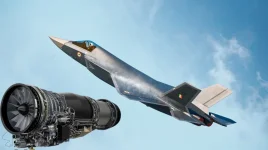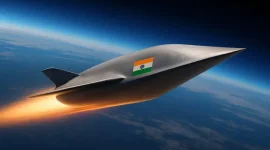- Views: 2K
- Replies: 11
India is nearing a significant defence agreement with the Philippines for the supply of the indigenous Akash Surface-to-Air Missile (SAM) system, expected to be finalised within 2025.
This potential deal, estimated to be worth over $200 million, would represent India's second major defence export to the Philippines, building upon the $375 million contract for the BrahMos supersonic cruise missile system signed in 2022.
Although it is not yet confirmed whether the Philippine Army or the Philippine Marine Corps will operate the system, the anticipated sale highlights the strengthening strategic ties between the two nations amid growing security concerns in the Indo-Pacific.
The Akash missile system, developed by India's Defence Research and Development Organisation (DRDO) and produced by Bharat Dynamics Limited (BDL), is a medium-range air defence platform. It is designed to intercept and destroy various aerial threats such as fighter aircraft, cruise missiles, and unmanned aerial vehicles (UAVs or drones).
The system boasts an effective range of up to 25 kilometres and can engage targets flying at altitudes as high as 18 kilometres, travelling at supersonic speeds nearing Mach 2.5. A standard Akash battery includes a Rajendra 3D radar, capable of tracking numerous targets, and four mobile launchers, each equipped with three missiles, allowing simultaneous engagement of multiple threats.
A key feature of the Akash system is its mobility; it can be mounted on tracked or wheeled vehicles, allowing for rapid deployment and operational flexibility in diverse terrains. This adaptability aligns well with the Philippines' requirements for versatile air defence capabilities.
The Akash system has been an integral part of India's air defence network since its induction into the Indian Air Force (2014) and the Indian Army (2015). Its effectiveness has also gained international recognition, with Armenia receiving its first Akash battery in November 2024 as part of a $230 million agreement.
The Philippines' pursuit of the Akash system is part of a larger effort to modernize its armed forces. This initiative is driven significantly by heightened tensions with China regarding territorial disputes in the South China Sea.
In February 2025, General Romeo Brawner, Chief of Staff of the Armed Forces of the Philippines, confirmed the nation's plans to acquire more advanced weaponry, specifically mentioning additional BrahMos systems and potentially submarines. While the Akash system wasn't explicitly named by General Brawner, reports suggest Manila intends to place an order during the fiscal year starting April 2025.
The Akash system could potentially be integrated into the Philippine Army's ground-based air defence units or assigned to the Philippine Marine Corps. The Marines, operating under the Navy, have been exploring options for shore-based air defence, aligning with the objectives of the military's Shore-Based Air Defence Missile System Acquisition Project.
BDL showcased the Akash system at the Asian Defence and Security Exhibition in Manila in 2024, highlighting its suitability for this role. Philippine defence spokesperson Arsenio Andolong acknowledged in February 2025 that the armed forces require such capabilities, though he refrained from confirming specific procurement plans.
Securing the Akash deal with the Philippines would mark a substantial success for India's ambition to increase its defence exports under the 'Aatmanirbhar Bharat' (Self-Reliant India) policy.
Once predominantly the world's largest arms importer, India has actively worked to boost its domestic defence production and exports since 2020. This effort saw defence exports climb significantly, reaching approximately $2.4 billion by March 2024.
The Akash system, with its high level of indigenous components (around 96%), is a prime example of this strategic shift. Beyond Armenia and the Philippines, countries like Brazil, Egypt, and Vietnam have also reportedly shown interest in the system.
Industry analysts suggest the potential Philippine contract for Akash could be larger in scope than the Armenian deal. Based on cost projections and comparison with Armenia's reported $720 million order for 15 systems, the Philippine acquisition might involve four to five complete Akash batteries, including radars, launchers, and missiles.
Bharat Dynamics Ltd is expected to be the lead manufacturer, with crucial support from Bharat Electronics Limited (BEL) for the radar and associated ground control systems, further demonstrating India's growing capacity as a reliable defence supplier on the global stage.




